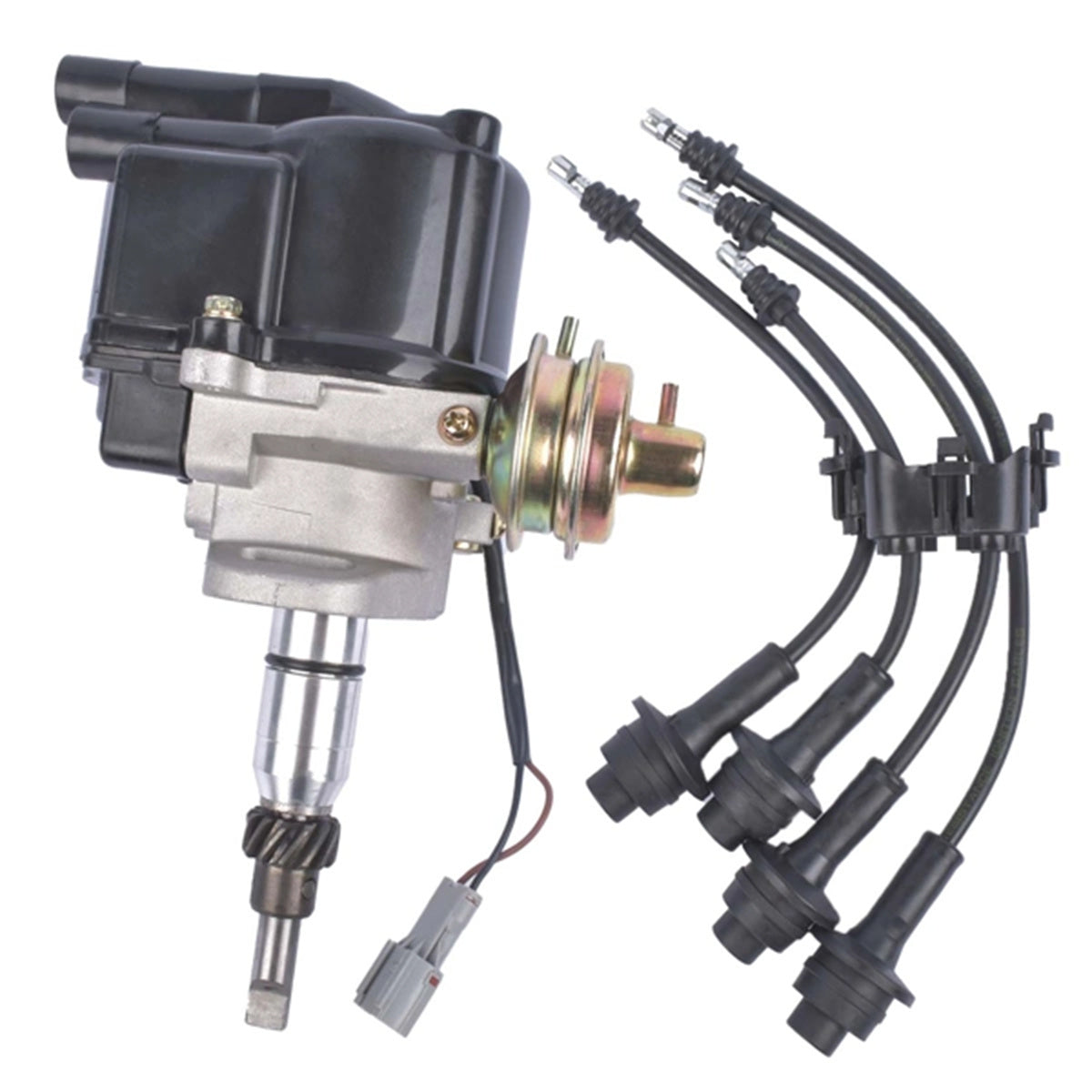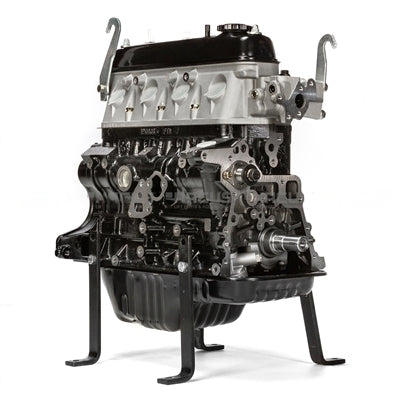How the 4Y Engine Powers Your Vehicle with Efficiency and Reliability
How the 4Y Engine Powers Your Vehicle with Efficiency and Reliability
Blog Article
Why the Engine Is the most effective Option for Efficiency and Effectiveness in Your Car
The engine continues to be a critical part in automobile layout, mainly as a result of its considerable impact on both performance and performance. As advancements in modern technology enable smaller sized engines to supply amazing power while maximizing fuel economic climate, the assimilation of features such as turbocharging and crossbreed systems comes to be increasingly crucial. These innovations not only improve driving experience yet also address environmental problems. The inquiry occurs: exactly how do these aspects integrate to redefine our understanding of automotive performance? Exploring this balance exposes much deeper understandings right into the future of engine design.
Understanding Engine Types
Understanding the various kinds of engines is crucial for optimizing efficiency and performance in auto layout. The main engine types include internal burning engines (ICE), electrical engines, and crossbreed systems, each offering unique benefits and constraints.
Inner burning engines, which can be additional categorized right into gas and diesel variants, count on the burning of gas to produce power. Fuel engines normally supply higher RPMs and much better acceleration, while diesel motor are recognized for their torque and gas effectiveness, making them suitable for durable applications.
Electric engines, on the other hand, make use of electric motors powered by batteries or fuel cells. They supply immediate torque delivery, causing smooth velocity and lower exhausts. The effectiveness of electric engines is dramatically greater than that of ICEs, making them a popular selection for eco-conscious consumers.
Crossbreed systems integrate both internal burning and electric engines, leveraging the staminas of both technologies. They maximize fuel intake by utilizing electrical power at lower rates and switching to fuel or diesel for higher rates or heavier tons.
Choosing the ideal engine kind is vital for achieving preferred efficiency metrics and environmental sustainability in modern-day automotive design.
The Influence of Engine Size
Engine dimension frequently plays an essential duty in figuring out an auto's performance and effectiveness. Generally determined in litres or cubic centimeters, engine size straight affects the power output and torque attributes of a vehicle. Larger engines normally generate more horsepower, allowing better acceleration and higher top rates. This is specifically advantageous in applications needing durable efficiency, such as cars and durable vehicles.
Nonetheless, raised engine dimension often correlates with diminished fuel efficiency. Larger engines consume more gas, leading to greater exhausts and functional prices. Subsequently, suppliers have to stabilize the need for power with the requirement for fuel economic climate. Smaller sized engines can provide sufficient performance for everyday driving while advertising far better effectiveness, making them a prominent choice in portable and mid-size vehicles.
In addition, improvements in engine design, such as turbocharging and straight gas shot, allow smaller sized engines to accomplish power levels similar to their larger equivalents. This trend stresses the value of not exclusively focusing on engine dimension but additionally thinking about total automobile design and innovation (4y engine). Ultimately, the influence of engine dimension on efficiency and effectiveness emphasizes the requirement for customers to evaluate their details driving preferences and demands when selecting a lorry
Advanced Engine Technologies
Developments in engine innovations have actually considerably reshaped the landscape of auto efficiency and efficiency, structure upon the fundamental principles established by engine size. Significantly, improvements such as turbocharging and straight gas injection have allowed smaller sized engines to supply power degrees previously related to larger counterparts. Turbochargers compress air going into the engine, enabling for raised power output without a corresponding boost in engine size, while direct injection see this website enhances fuel shipment, improving burning effectiveness.
In addition, variable shutoff timing systems have actually become a crucial technology, allowing engines to adjust valve operation based upon driving problems. This flexibility enhances both efficiency during acceleration and gas effectiveness throughout cruising. Crossbreed and electric engine modern technologies further illustrate the shift in automotive design, integrating traditional interior burning engines with electric motors to maximize effectiveness while decreasing discharges.
Furthermore, innovations in products scientific research have brought about lighter, extra durable engine components, additionally boosting performance and durability. The assimilation of innovative electronics and engine control systems also allows for real-time modifications, ensuring optimum efficiency throughout different problems. Collectively, these advanced engine technologies not only boost vehicle performance yet also add to a more sustainable automobile future, showing the continuous advancement of engine design.
Harmonizing Power and Performance
Striking a balance in between power and performance is essential in modern automobile design as producers look for to satisfy significantly rigid discharges policies while pleasing customer need for efficiency (4y engine). The obstacle exists in enhancing engine features to deliver robust power result without sacrificing fuel economic situation
To attain imp source this equilibrium, engineers employ different approaches, such as turbocharging, which improves engine power by requiring in even more air, enabling a smaller sized engine displacement that boosts gas performance. Variable shutoff timing modern technologies also play a substantial duty, allowing engines to change their performance features based on driving problems, consequently boosting both power and effectiveness.
Furthermore, improvements in products and making strategies have resulted in article lighter engine components, which reduce general vehicle weight and boost fuel efficiency without jeopardizing power. Hybrid technologies have also become a feasible option, integrating typical interior combustion engines with electric powertrains to offer a boost in performance while preserving lower emissions.

Future Fads in Engine Style

In addition, the growth of advanced products, such as high-strength alloys and lightweight composites, is set to transform engine parts. These products not just lower weight but additionally improve thermal efficiency, consequently enhancing efficiency. Furthermore, makers are discovering variable compression proportions, enabling engines to adjust to different driving conditions, improving both power outcome and gas economic climate.
Further, the surge of expert system and artificial intelligence in engine style is enabling predictive upkeep and real-time performance optimization. This modern technology can bring about engines that self-adjust for optimal efficiency based on driving patterns.

Verdict
In conclusion, the engine offers as a critical part in attaining optimum performance and effectiveness in contemporary automobiles. The interplay between engine dimension and layout proceeds to advance, driving innovations that balance thrilling performance with ecological sustainability.
In addition, advancements in engine layout, such as turbocharging and direct gas shot, allow smaller engines to attain power degrees equivalent to their bigger counterparts.Innovations in engine technologies have actually considerably improved the landscape of auto performance and effectiveness, structure upon the foundational concepts developed by engine size. Turbochargers compress air getting in the engine, allowing for increased power outcome without a matching increase in engine dimension, while direct shot optimizes fuel distribution, improving burning efficiency.
Hybrid and electric engine technologies even more highlight the shift in automobile layout, integrating traditional inner burning engines with electrical motors to optimize performance while reducing exhausts.
Collectively, these sophisticated engine modern technologies not only enhance automobile performance yet also contribute to an extra sustainable automobile future, showing the continuous advancement of engine style. (4y engine)
Report this page